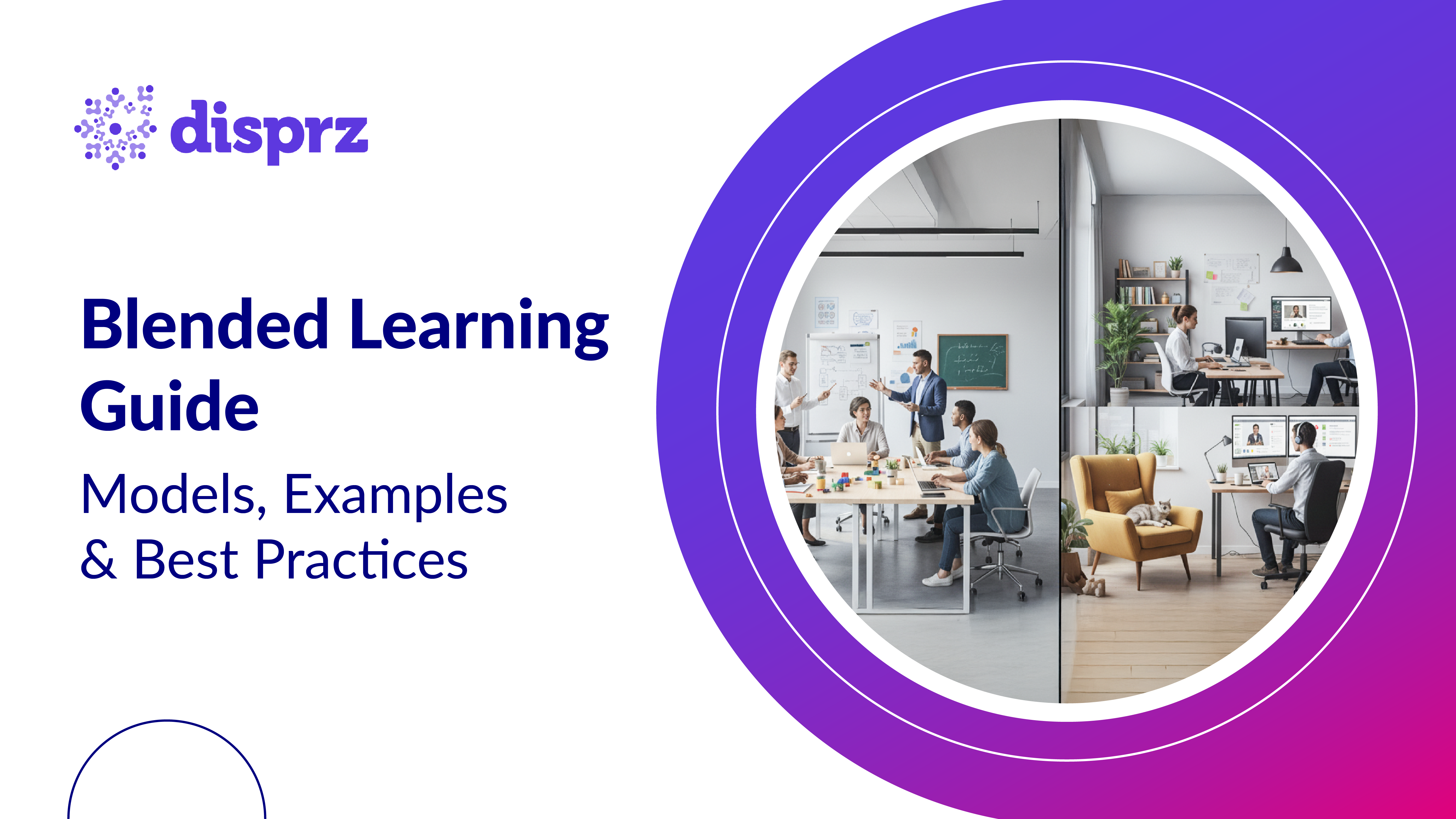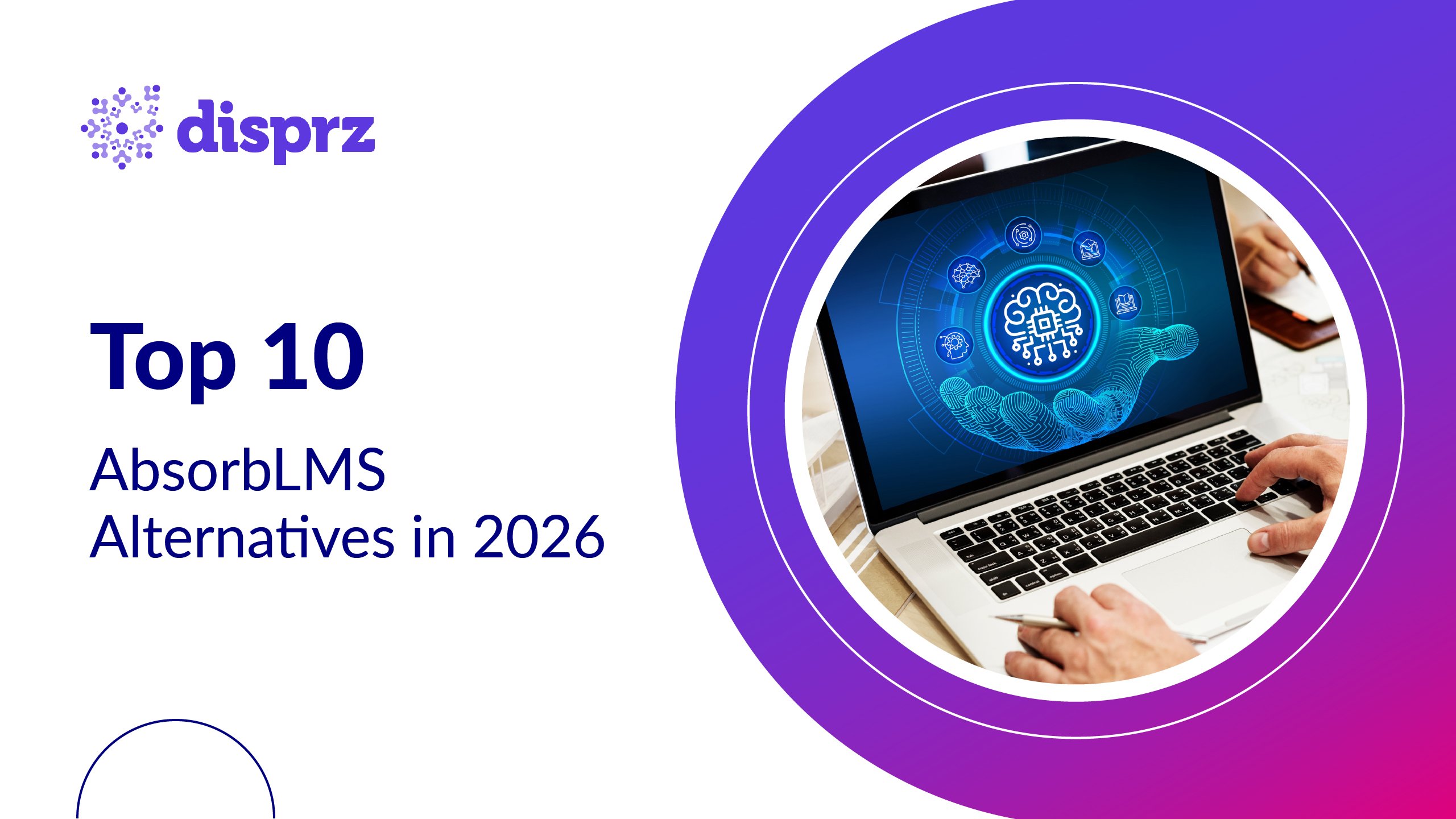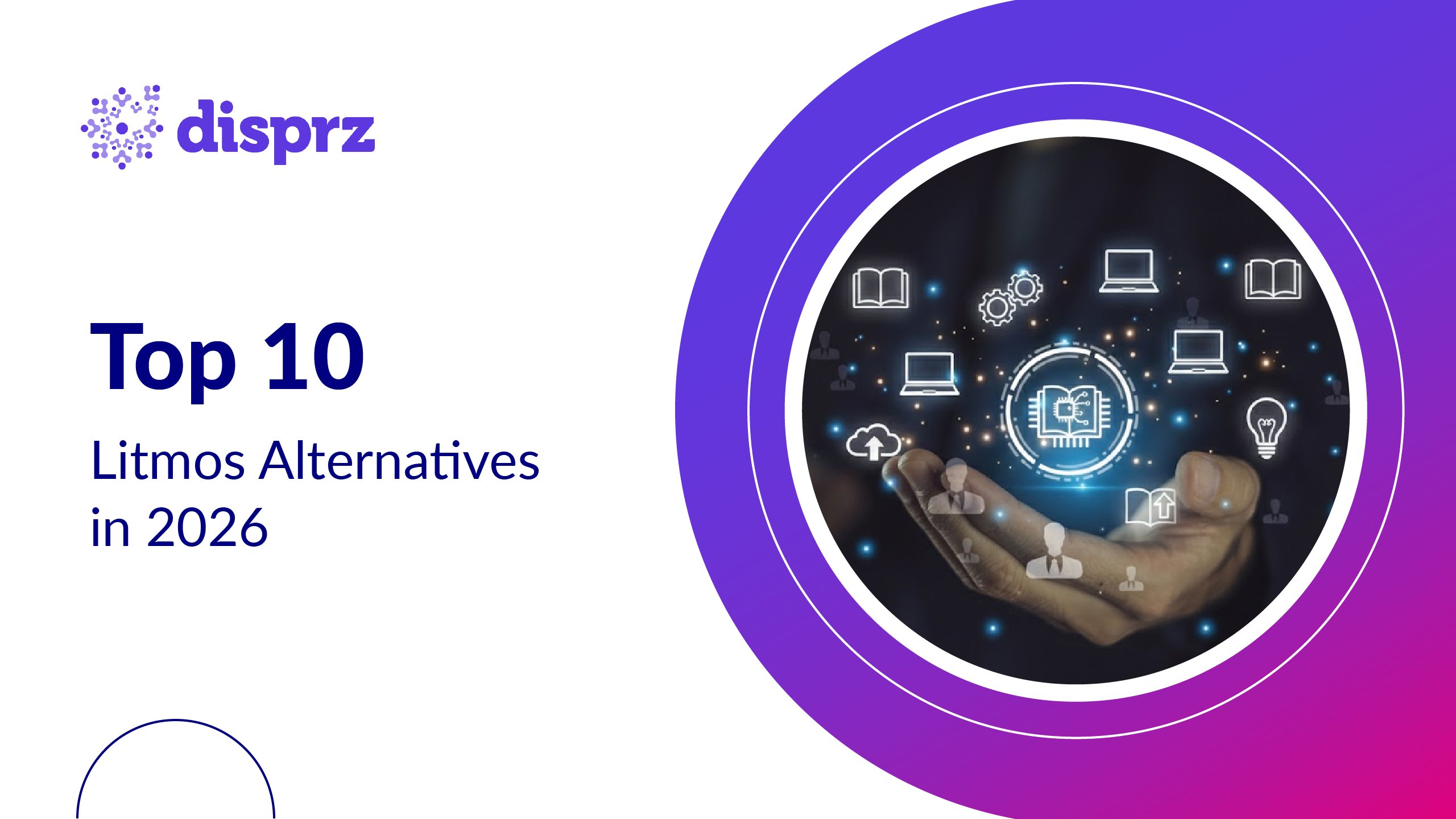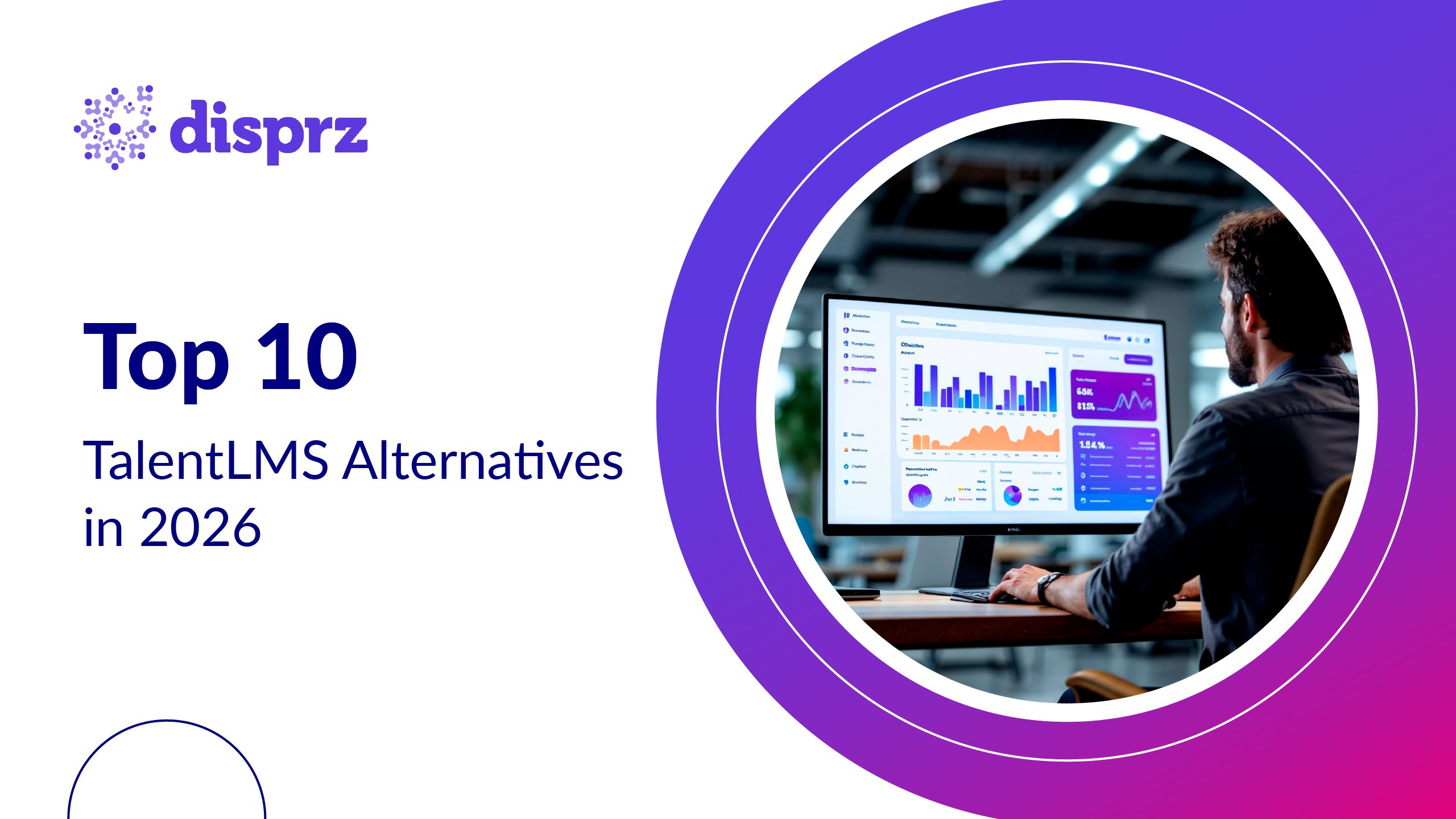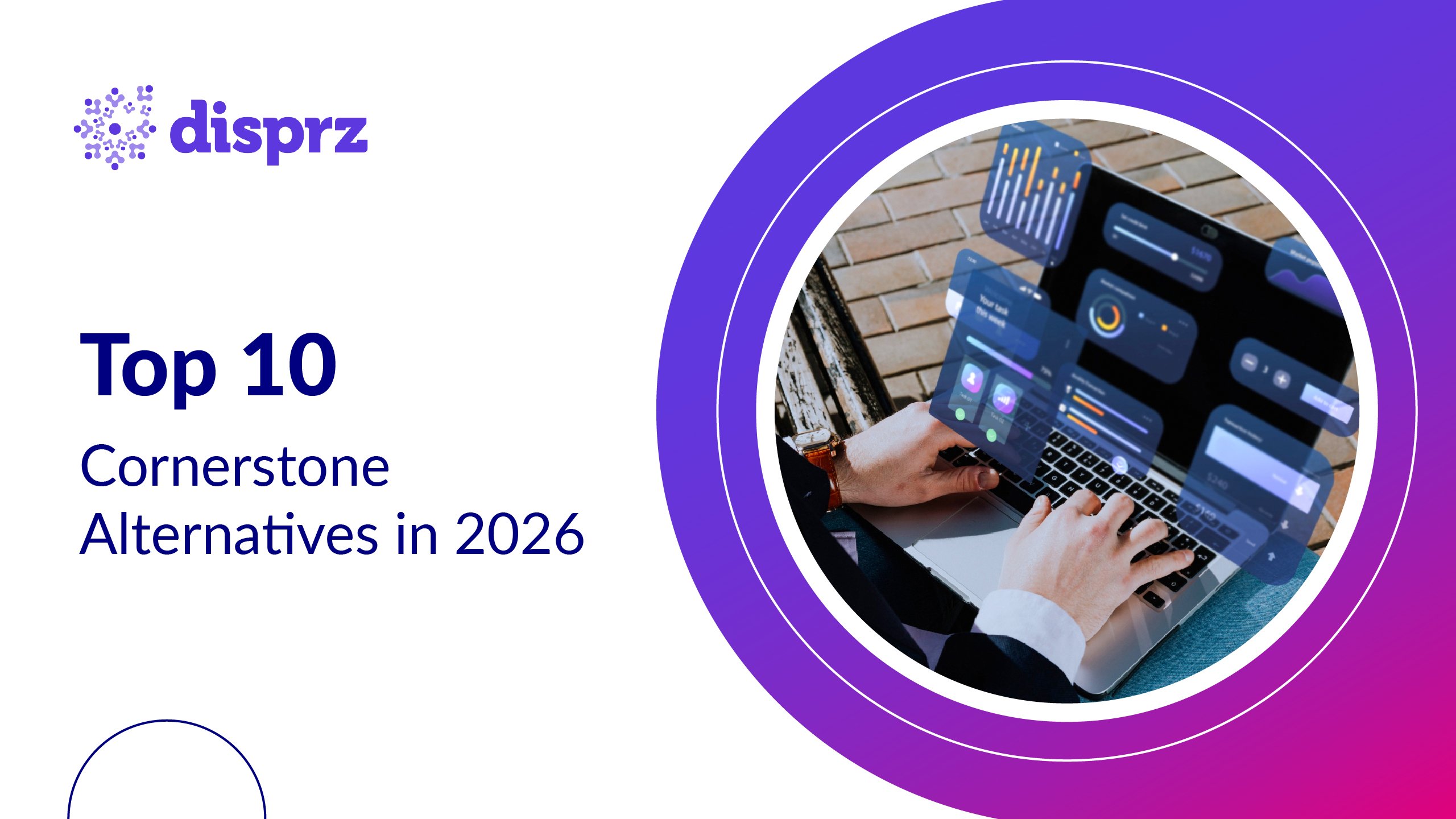The way people learn at work has undergone significant changes. The post-pandemic rush to digitize learning is giving way to a more balanced approach, one that combines the best of both worlds, digital flexibility and human connection.
In 2025, blended learning is not be constrained to just a mix of e-learning modules and classroom sessions. As hybrid workplaces mature, organizations are using AI-driven personalization to tailor learning journeys, ensuring that every employee gets the right mix of instructor-led guidance and self-paced digital learning. In this hybrid age, that adaptability keeps motivation high and minimizes wasted effort.
And the payoff is tangible. LinkedIn reports that structured, career-driven learning programs yield nearly 700 % ROI, meaning every dollar invested in learning can return about seven dollars in value.
Blended learning is fast becoming the foundation of modern workforce development. By merging digital accessibility with the empathy and immediacy of human-led sessions, corporate learning teams are scaling impact faster, personalizing at depth, and creating continuous learning cultures that actually drive performance.
What is Blended Learning?
Blended learning is the intentional mix of digital learning and instructor-led training to create a unified, flexible learning experience. It’s not about replacing the classroom or digitizing everything; it’s about designing learning journeys that combine the best of both technology’s scale and accessibility with the human depth of coaching and collaboration.
In corporate learning, that balance is critical. Employees today work across locations, time zones, and devices. A blended model ensures that learning fits into work, and not around it, allowing people to engage at their own pace while still benefiting from expert-led discussions, feedback, and community learning moments.
Traditional vs. Modern Blended Learning
| Aspect | Traditional Blended Learning | Modern Blended Learning (2025) |
|---|---|---|
| Format |
Mix of classroom and basic online modules | Digital + instructor-led, AI-personalized, mobile-first |
| Goal |
Convenience and cost efficiency | Learning effectiveness, scalability, and personalization |
| Learner Experience |
Same content for all learners | Adaptive paths tailored to role, skill level, and performance |
| Flexibility | Fixed schedules and locations | On-demand access anytime, anywhere, hybrid-ready |
| Feedback & Assessment |
Periodic, often delayed | Continuous, real-time, data-driven insights |
| Instructor Role |
Primary knowledge provider | Facilitator and coach, supported by AI and analytics |
Why It Matters in 2025
In 2025, organizations operate in hybrid, skill-based ecosystems. Work is no longer confined to offices, and learning cannot be confined to classrooms. As job roles evolve faster than traditional training cycles, the ability to reskill and upskill continuously becomes a strategic necessity.
Blended learning meets this challenge by offering both structure and flexibility. It allows employees to learn at their own pace while maintaining the social and cognitive benefits of instructor-led interaction. For global enterprises, it also ensures consistency where everyone receives the same quality of learning experience, regardless of geography or schedule.
5 Blended Learning Models to Know in 2025
Blended learning takes many forms, and each model serves different organizational goals and learner needs. In 2025, modern L&D programs leverage these models, often enhanced with AI, analytics, and mobile access, to deliver scalable, flexible, and personalized learning experiences.
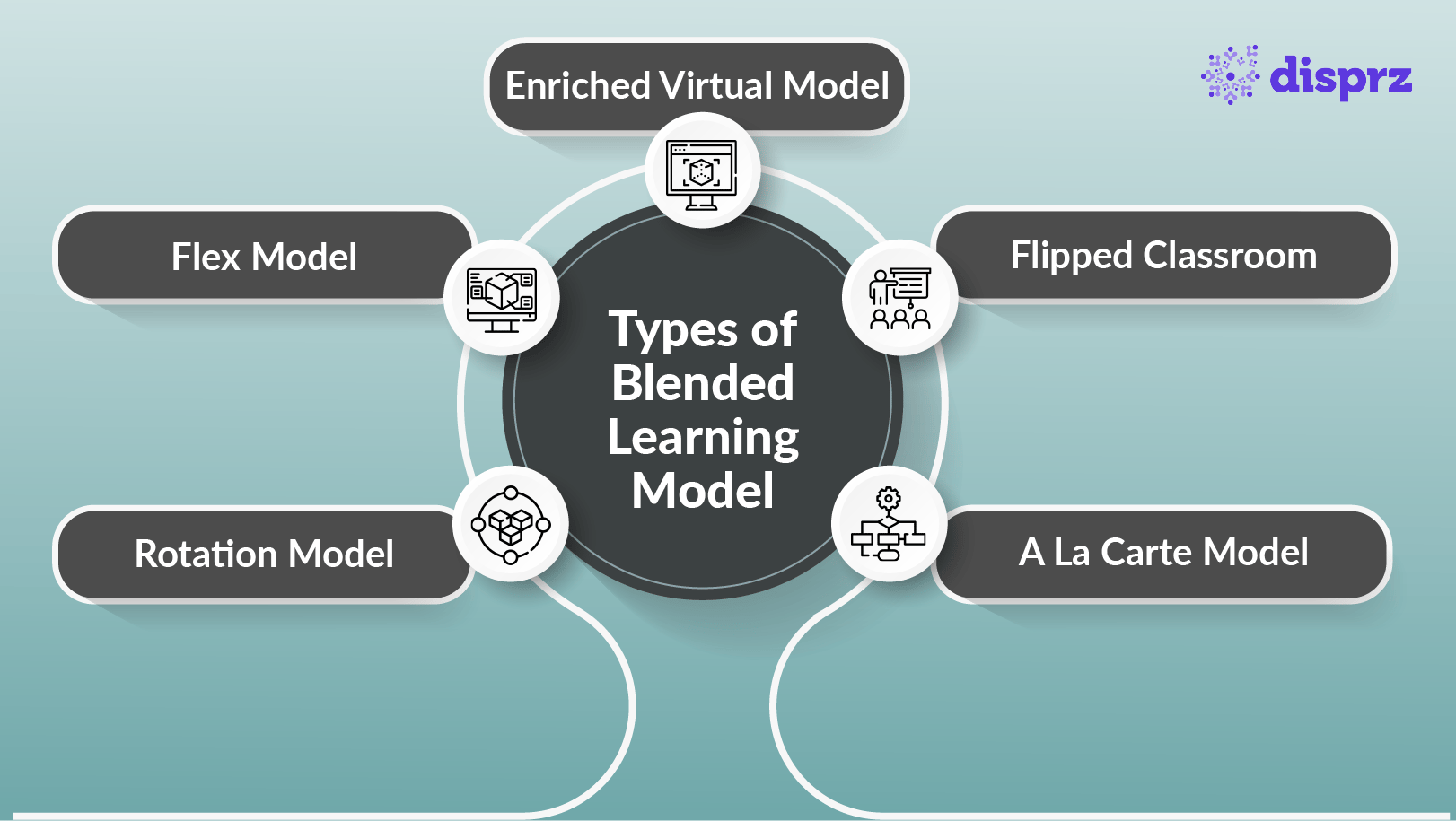
1) Rotation Model
In the rotation model, learners alternate between traditional classroom sessions and online modules. This structured approach allows instructors to guide group learning while giving learners the flexibility to study digitally at their own pace. Organizations often use this model for onboarding or skill reinforcement programs.
2) Flex Model
The flex model is digital-first, with learners accessing online content as the primary learning method. Instructors or trainers provide support and coaching on demand. This model works well for hybrid workplaces where employees are distributed across locations and schedules vary.
3) Enriched Virtual Model
In an enriched virtual model, most learning happens online, but periodic in-person sessions are included to foster collaboration, discussion, and hands-on practice. It’s ideal for technical or leadership programs where interaction is important but frequent travel is impractical.
4) Flipped Classroom
The flipped classroom reverses traditional teaching. Learners study content online before attending live sessions focused on discussion, problem-solving, and application. This model encourages deeper engagement and allows instructors to focus on higher-order thinking rather than content delivery.
5) A La Carte Model
In the a la carte model, learners choose from a menu of online modules to customize their learning journey. This learner-driven approach supports personalized development paths and allows employees to focus on skills that are most relevant to their role or career goals.
Disprz LXP supports all these blended learning models, providing AI-driven personalization, real-time analytics, and seamless delivery, enabling organizations to scale, adapt, and optimize learning experiences for every employee.
What is a Blended Learning LMS?
A blended learning LMS is a digital platform that supports a mix of online and offline training methods to create a more flexible and effective learning experience. It enables organizations to deliver self-paced e-learning content, schedule live virtual sessions, track in-person classroom training, and monitor learner progress; all in one place. By combining digital tools with traditional face-to-face instruction, a blended learning LMS helps L&D teams personalize training, improve accessibility, and drive better learning outcomes across the workforce.
How to Create a Blended Learning Program With Your LMS?
Blended learning today isn’t about toggling between offline and online, such as combining classroom and digital; it’s about designing frictionless, high-impact learning journeys that are deeply tied to outcomes. Modern AI-powered LMS platforms aren’t just delivery tools; they act as intelligent learning orchestrators, stitching together formats, content, nudges, and analytics into one unified experience that adapts to each learner’s context and performance.
Here’s what that looks like in action:
A fast-scaling retail chain uses an AI-powered learning platform to upskill store managers. Based on role and performance data, the system recommends a personalized path, starting with quick mobile modules on team management, followed by a peer-learning session in a cohort group.
The LMS then auto-schedules a live virtual coaching call with the area manager. Based on in-app feedback and assessment scores, it pushes additional reinforcement content and prompts for reflection. The entire journey is tracked, from knowledge gain to on-ground behavior change, and managers get real-time dashboards to intervene where needed.
Here’s how you can build this kind of program:
-
Start with outcomes, not formats: Define what success looks like for each role, then design backward to build learning paths that enable those outcomes.
-
Blend with purpose: Combine mobile-first learning, live sessions, peer discussions, and on-the-job practice, each format where it drives the most value.
-
Let AI power the flow: Use an LMS that auto-recommends content, triggers nudges, and adapts sequences based on role, skill level, and performance data.
-
Integrate into the workday: Surface training inside tools like MS Teams, CRM, or frontline apps, learning becomes part of the workflow, not a detour.
-
Track performance lift, not just clicks: Measure skill improvements, behavior shifts, and business impact, not just course completions.
-
Stay dynamic: Use analytics to constantly optimize the journey, switch formats, content, or pacing based on what’s resonating.
Key Benefits of Blended Learning for Organizations
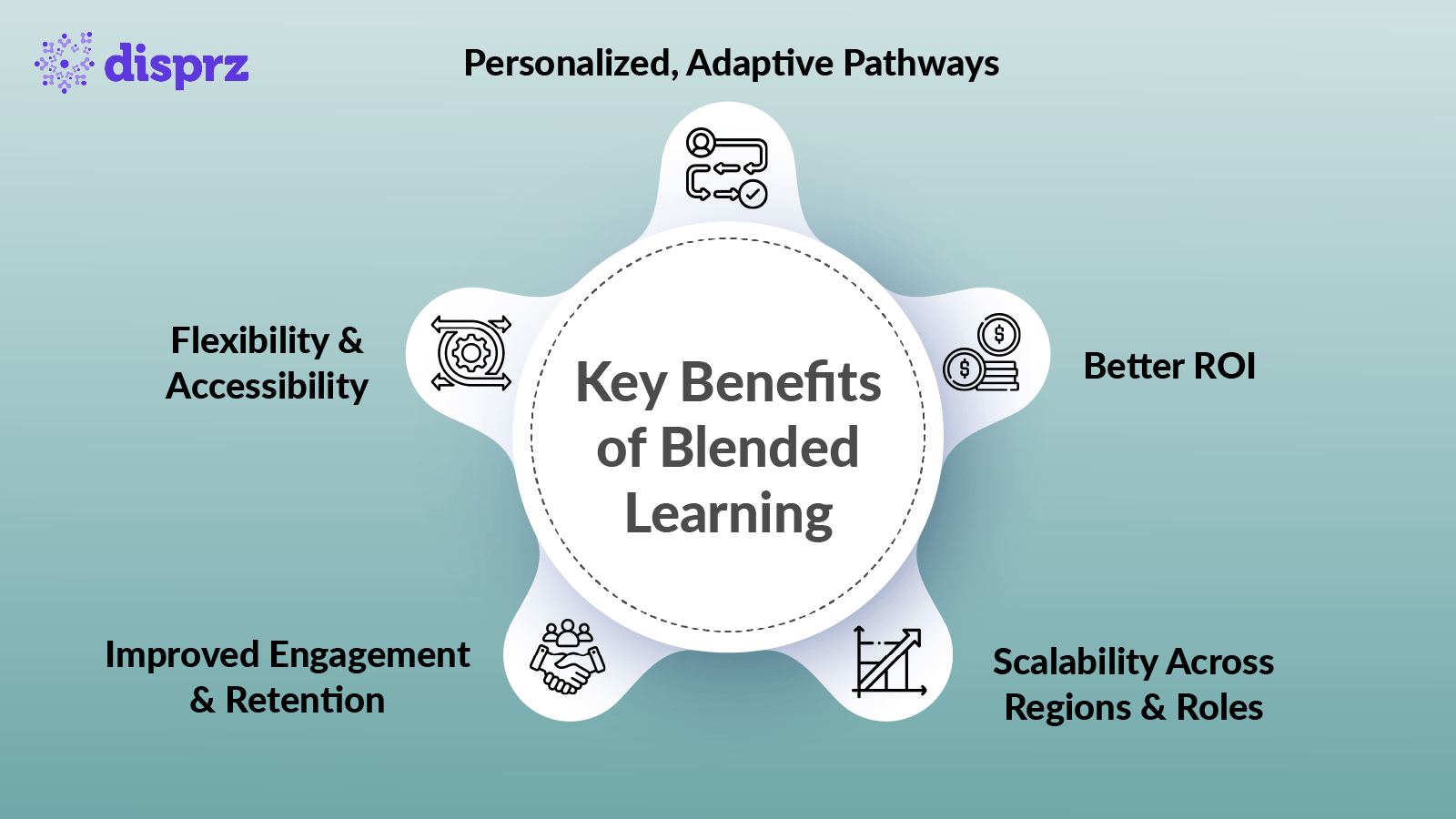
Blended learning offers organizations a strategic advantage by combining the strengths of digital and instructor-led approaches.
Here are five core blended learning benefits:
-
Flexibility & Accessibility – Employees can learn anytime, anywhere, combining online modules with in-person sessions that suit diverse schedules and work locations.
-
Improved Engagement & Retention – Mixing interactive digital content with human-led instruction keeps learners motivated and helps knowledge stick.
-
Personalized, Adaptive Pathways – AI and learning platforms tailor content to each learner’s role, skill level, and progress, ensuring training is relevant and effective.
-
Better ROI – By optimizing time, reducing travel, and streamlining learning delivery, blended programs deliver measurable cost and productivity benefits.
-
Scalability Across Regions & Roles – Blended learning enables consistent, high-quality training for global workforces, supporting both specialized roles and broad organizational initiatives.
Blended Learning Best Practices for L&D Leaders
Implementing blended learning effectively requires more than just combining online and in-person sessions. In 2025, successful L&D leaders adopt strategies that maximize engagement, personalization, and measurable impact.
Start with Role-Based Skill Mapping
Identify the critical skills and competencies for each role before designing learning programs. Role-based skill mapping ensures that every learning path is relevant, targeted, and aligned with business goals, preventing generic or wasted training.
Mix Synchronous & Asynchronous Formats Smartly
Balance live instructor-led sessions with self-paced digital content. Synchronous learning fosters collaboration and discussion, while asynchronous modules allow employees to engage at their own pace. The right mix keeps learners motivated and reduces scheduling constraints.
Leverage AI for Personalization & Recommendations
Use AI to tailor learning paths, recommend content, and adjust difficulty based on individual progress and performance. Personalization ensures learners get the most relevant training, increasing completion rates and skill acquisition.
Add Social Learning & Peer Collaboration
Incorporate discussion forums, group projects, and peer feedback to enhance knowledge sharing and engagement. Social learning reinforces concepts, encourages collaboration, and builds a connected learning culture.
Track Outcomes with Learning Analytics
Measure engagement, skill growth, and business impact using real-time analytics. Learning analytics provide actionable insights that help L&D leaders refine programs, demonstrate ROI, and continuously improve blended learning initiatives.
Real-World Examples of Blended Learning in Action
Blended learning is not just theoretical; organizations across industries are implementing it to drive measurable impact.
Here are three blended learning examples that illustrate how different models work in practice:
Example 1
A large retail chain uses the rotation model to train frontline employees on product knowledge and customer service. Staff alternate between short in-store workshops and interactive online modules. This approach ensures employees get hands-on practice while also benefiting from digital reinforcement, improving both learning retention and on-the-floor performance.
Example 2
A banking and financial services organization adopted the flipped classroom to deliver compliance and soft skills training. Employees complete self-paced online modules covering regulations, case studies, and scenarios before attending live sessions focused on discussion, role-play, and problem-solving. This method maximizes live interaction and ensures that compliance learning is applied effectively.
Example 3
A multinational enterprise in the Middle East implemented blended leadership development programs with AI-driven learning pathways. Senior managers receive a mix of virtual workshops, personalized digital modules, and periodic in-person coaching. AI recommendations adjust the learning journey based on individual progress and skill gaps, enabling scalable, targeted leadership development.
Blended Learning Platform Use-Cases 2025
Boeing
Boeing faced specific training hurdles, notably with their capture team leader (CTL) training for sales teams. To overcome these challenges, they launched eight web-based training lessons in a virtual environment, offering foundational knowledge and tools. This preparation was followed by a four-day live course, providing direct interaction with experienced CTLs, resulting in highly successful outcomes for the participants.
Intel Corporation
Intel Corporation implemented a blended learning approach to ensure its technicians' proficiency with complex equipment. This approach included digital simulations, scenarios, and interactive exercises, enhancing retention rates across various locations. The performer-centric model integrated training projects into regular duties, using experiential and self-paced learning, supported by collaborative and instructor-led models.
This method provided personalized feedback, anytime access to resources, real-time peer interaction, gamified learning, adaptive progress, practical project training, and effective employee progress management through an LMS.
Challenges in Implementing Blended Learning (and How to Solve Them)
Even the most well-designed blended learning programs can face hurdles. Recognizing these challenges and applying targeted solutions is critical to ensuring success.
Engagement Gaps
Learners sometimes struggle to stay motivated or complete courses, particularly when content is digital-heavy.
Solution: Incorporate gamification elements such as badges, leaderboards, and progress tracking, along with nudges and reminders to encourage consistent engagement. This keeps learners active and invested in their progress.
Technology Adoption Resistance
Employees may be hesitant to use new platforms, especially if they are unfamiliar or cumbersome.
Solution: Offer micro-learning modules and mobile-first content that’s easy to access, consume, and apply. This reduces friction and encourages adoption, even among less tech-savvy learners.
Measuring Success
Without clear metrics, it’s difficult to assess whether blended learning initiatives are driving business impact.
Solution: Utilize analytics dashboards to track engagement, completion, skill acquisition, and performance improvements. Real-time insights help L&D leaders refine programs, demonstrate ROI, and make data-driven decisions.
6 Steps To Plan a Blended Learning Journey
To make blended learning successful, it’s important to carefully plan the learning journey and break it down into segments. This allows learners to focus on one aspect of the learning at a time and ensures that they have the necessary knowledge and skills to move on to the next stage of the journey.
Step 1
Assess your employees’ skills and knowledge to determine their knowledge gaps and needs.
Step 2
Identify the learning goals and objectives to help your employees achieve their career aspirations and support your organization’s mission and goals.
Step 3
Choose the right learning platform, such as an LMS or LXP, to support your blended learning program. The best blended learning platforms offer tools to manage and track progress while delivering a seamless mix of in-person and online training.
Step 4
Develop a mix of learning activities to engage and motivate your employees, such as workshops, seminars, online courses, and hands-on projects.
Step 5
Provide ongoing support and resources to help employees stay on track & succeed in their learning journey to gain skills and competencies with access to subject matter experts, learning aids, and peer support.
Step 6
Evaluate the effectiveness of your blended learning program by collecting feedback from your employees and measuring their progress against the learning objectives.
By following these steps, you can create a blended learning journey and training plan tailored to the needs of your employees. This ensures a structured approach to developing their skills and competencies.
Future Trends in Blended Learning (2025 and Beyond)
Blended learning continues to evolve rapidly, driven by technology, workforce shifts, and changing expectations for learning experiences. Looking ahead, several trends are shaping how organizations will design and deliver blended programs in 2025 and beyond.
1) AI-Driven Adaptive Pathways
Artificial intelligence is increasingly being used to personalize learning journeys in real time. Adaptive pathways analyze learner progress, performance, and preferences to recommend content that is most relevant. This ensures every employee receives the right learning at the right time, improving engagement, retention, and skill mastery.
2) Integration with Skills Intelligence & LXPs
Modern blended programs are tightly integrated with learning experience platforms (LXPs) and skills intelligence frameworks. By linking training to competency frameworks and organizational skill needs, L&D leaders can identify skill gaps, tailor learning paths, and measure progress against strategic business goals.
3) Microlearning + Blended Models for Frontline
Frontline employees benefit from short, focused microlearning modules delivered alongside in-person coaching or workshops. This approach fits learning into busy schedules, supports retention of critical skills, and ensures on-the-job application in fast-paced operational environments.
4) Immersive Blended Learning with AR/VR
Augmented and virtual reality are transforming blended learning by offering immersive simulations and interactive experiences. AR/VR can replicate real-world scenarios for training in leadership, safety, technical skills, or customer interactions — making learning more engaging, practical, and memorable.
Conclusion
Blended learning in 2025 is less about formats and more about impact. Organizations that design learning experiences with flexibility, personalization, and real-world relevance unlock the potential of their workforce in ways static programs never could. The true advantage lies in creating a culture where employees feel empowered to learn, apply, and grow continuously, no matter where they are or what role they play.
As technology advances, from AI-driven pathways to immersive AR/VR simulations, the opportunity for L&D leaders is to stay ahead of the curve: to experiment, iterate, and measure what truly drives performance. Platforms like Disprz LXP make this possible by providing AI-powered personalization, real-time analytics, and seamless delivery across all blended learning models. Book a demo to see how Disprz can elevate your training programmes.
FAQs
1) What are the main blended learning models in 2025?
In 2025, the main blended learning models include rotation, flex, enriched virtual, flipped classroom, and a la carte. The rotation model alternates between in-person and digital sessions. Flex is digital-first with instructor support. Enriched virtual is mostly online with occasional in-person interactions. The flipped classroom combines pre-study online content with live discussion, while a la carte allows learners to choose modules based on individual needs and goals.
2) How is blended learning different from hybrid learning?
Blended learning and hybrid learning are often confused, but they are distinct. Blended learning focuses on the method — combining digital content and instructor-led sessions to create an integrated learning experience. Hybrid learning, on the other hand, refers to the location or mode of participation — learners attend in-person and remote sessions, typically in real-time, rather than the intentional design of content delivery.
3) What are examples of blended learning in the workplace?
Blended learning is applied across industries to enhance skill development. Examples include retail frontline training using rotation models for product knowledge, BFSI compliance and soft skills programs via flipped classrooms, and leadership development in enterprises with AI-driven adaptive pathways. These programs combine digital modules with live sessions or workshops, allowing learners to apply knowledge immediately while supporting engagement and retention.
4) What tools are needed for blended learning programs?
Successful blended learning requires a combination of technology platforms and content tools. Learning experience platforms (LXPs) manage and deliver personalized content. Analytics dashboards track engagement, skill acquisition, and performance. Collaboration tools and discussion forums support social learning. Mobile-accessible content ensures learners can engage anytime, anywhere. Optional tools like gamification engines or AR/VR modules can enhance interaction and retention.
5) How can organizations measure blended learning effectiveness?
Measuring effectiveness involves tracking both learner engagement and business outcomes. Key metrics include completion rates, skill improvement, participation in discussions, and knowledge retention. Learning analytics dashboards provide real-time insights, while feedback surveys capture learner experience. By linking these metrics to business performance — such as productivity gains or compliance adherence — organizations can assess ROI, refine programs, and continuously improve the impact of blended learning initiatives.



